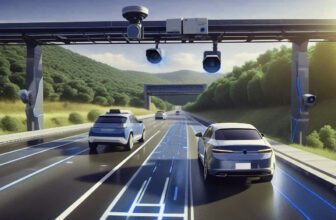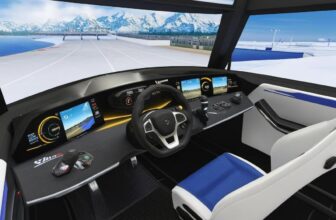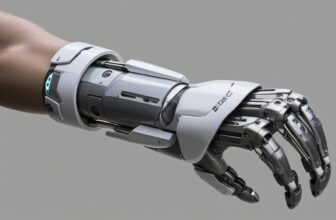
What Technology is Used in Digital Painting?
Digital painting is an artistic process where traditional painting techniques, such as brush strokes, blending, and layering, are applied using digital tools. This method has revolutionized the creative world, allowing artists to explore new techniques, work more efficiently, and create stunning visual art with endless possibilities. The tools and technology behind digital painting are integral to its success. Below, we’ll explore the various technologies that make digital painting possible and how they shape this creative field.
1. Hardware in Digital Painting
The hardware used in digital painting forms the foundation of the creative process. These tools include computers, graphics tablets, and display monitors, each playing a crucial role in enabling the artist to translate their ideas into digital formats.
a. Computers
Computers serve as the central hub for digital painting. A powerful computer with a high-speed processor, sufficient RAM, and a dedicated graphics card ensures smooth performance. Key features include:
- Processing Power: Multicore processors like Intel Core i7 or AMD Ryzen ensure the software runs efficiently.
- Graphics Cards: Dedicated GPUs, such as NVIDIA GeForce or AMD Radeon, accelerate rendering and handle intensive tasks like real-time effects.
- Memory (RAM): At least 16GB of RAM is recommended for seamless multitasking and large file handling.
b. Graphics Tablets
Graphics tablets are the most commonly used input devices in digital painting. These tools allow artists to draw naturally with a stylus. Key types include:
- Non-Display Tablets: Devices like the Wacom Intuos offer a pressure-sensitive surface that translates pen movements onto a computer screen.
- Pen Displays: Tablets with built-in screens, such as Wacom Cintiq and XP-Pen Artist, let artists draw directly on the screen for a more intuitive experience.
- Standalone Tablets: Devices like the iPad Pro or Microsoft Surface provide a portable, all-in-one solution for digital painting.
c. Styluses
Styluses, or digital pens, are essential for precision and natural drawing gestures. Features include:
- Pressure Sensitivity: Styluses detect varying levels of pressure to create lines of different thicknesses.
- Tilt Recognition: This feature simulates traditional brush angles and strokes.
- Customizable Buttons: Some styluses have programmable buttons for shortcuts, enhancing efficiency.
d. Monitors and Color Calibration Tools
High-quality monitors are essential for accurate color representation. IPS panels are favored for their color accuracy and wide viewing angles. Additionally, color calibration tools like the X-Rite i1 Display ensure that colors appear consistent across devices and prints.
2. Software for Digital Painting
Digital painting software provides the tools and virtual brushes that mimic traditional mediums. Different programs cater to various artistic needs, each with unique features.
a. Professional Digital Painting Software
- Adobe Photoshop: Known for its versatility, Photoshop offers a wide range of brushes, layer options, and advanced editing tools.
- Corel Painter: Renowned for its realistic simulation of traditional media like oils, watercolors, and pastels.
- Clip Studio Paint: Popular among illustrators and comic artists for its intuitive interface and specialized tools.
b. Open-Source and Affordable Options
- Krita: A free, open-source program designed specifically for digital artists.
- Procreate: A cost-effective app for iPad users, offering powerful features and a user-friendly interface.
c. AI-Enhanced Tools
Modern digital painting software incorporates artificial intelligence to assist artists. Features include:
- Auto-Painting: AI tools that mimic an artist’s style.
- Content-Aware Fill: Tools that intelligently remove or fill areas.
- Brush Customization: AI-based algorithms enable artists to design unique brushes.
3. Technological Features Enhancing Digital Painting
The evolution of digital painting technology has introduced features that significantly enhance the artistic experience.
a. Pressure Sensitivity and Dynamics
Pressure-sensitive devices replicate the tactile experience of traditional painting. This allows artists to vary the thickness and opacity of strokes, much like using a physical brush or pencil.
b. Layering
Layering is one of the most powerful features in digital painting. It allows artists to:
- Separate elements of a composition for easy editing.
- Experiment with different effects without altering the base artwork.
- Use blending modes to create unique visual styles.
c. Brush Customization
Brush engines in digital painting software offer extensive customization. Artists can:
- Adjust brush size, shape, and texture.
- Mimic real-world mediums like charcoal, ink, or watercolor.
- Use dynamic brushes that respond to speed, pressure, and tilt.
d. Real-Time Rendering
Real-time rendering ensures that changes, such as color adjustments or effects, appear instantly. This capability is crucial for maintaining workflow efficiency.
e. 3D Integration
Some programs allow integration with 3D models, enabling artists to paint directly onto 3D surfaces. This is particularly useful for game design, animation, and product visualization.
4. Emerging Technologies in Digital Painting
As technology advances, new tools and methods are shaping the future of digital painting.
a. Virtual Reality (VR) and Augmented Reality (AR)
VR and AR are redefining how artists interact with their workspaces. Tools like Tilt Brush by Google and Adobe Aero allow artists to:
- Paint in a 3D space.
- Create immersive, interactive environments.
- Visualize their artwork in augmented reality.
b. Artificial Intelligence (AI)
AI-powered tools are transforming digital painting with:
- Style Transfer: Applying the style of famous artists to a digital artwork.
- Smart Assistants: Recommending compositions, palettes, and brush settings.
- Automation: Automating repetitive tasks, such as coloring or detailing.
c. Cloud-Based Solutions
Cloud technology enables:
- Collaboration with other artists in real-time.
- Access to artwork from multiple devices.
- Automatic backups to prevent data loss.
d. Advanced Touchscreens and Haptics
Modern touchscreens offer:
- High-resolution displays with accurate color reproduction.
- Multi-touch gestures for zooming, rotating, and navigating.
- Haptic feedback to simulate the texture of different surfaces.
5. The Role of Artificial Intelligence in Digital Painting
AI is increasingly influencing digital painting, enabling artists to achieve more with less effort. Key AI applications include:
a. Smart Brushes
AI-powered brushes adapt to an artist’s style, creating dynamic strokes that adjust automatically based on context.
b. Generative Art
AI can create original pieces of art or assist in generating ideas by:
- Suggesting compositions.
- Generating textures and patterns.
- Enhancing creativity with unexpected results.
c. Time-Saving Features
AI automates time-consuming processes such as:
- Line art cleanup.
- Colorization.
- Adding fine details to backgrounds.
6. Accessibility and Democratization of Digital Painting
Advancements in technology have made digital painting more accessible. Affordable tablets, free software, and online tutorials empower artists of all skill levels to explore this medium. Platforms like DeviantArt, ArtStation, and Behance provide opportunities for artists to showcase their work, learn, and connect with others in the creative community.





